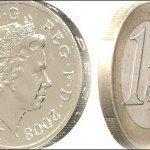 Friday’s trade saw USD/CAD within the range of 1.3147-1.3270. The pair closed at 1.3149, plummeting 0.90% on a daily basis, or at the steepest rate since August 12th, when it fell 1.04%. The daily low has been the lowest level since September 18th, when a low of 1.3007 was registered. In weekly terms, USD/CAD lost 1.41%, which has been the most considerable weekly loss since the week ended on April 19th, when the pair plunged 2.48%.
Friday’s trade saw USD/CAD within the range of 1.3147-1.3270. The pair closed at 1.3149, plummeting 0.90% on a daily basis, or at the steepest rate since August 12th, when it fell 1.04%. The daily low has been the lowest level since September 18th, when a low of 1.3007 was registered. In weekly terms, USD/CAD lost 1.41%, which has been the most considerable weekly loss since the week ended on April 19th, when the pair plunged 2.48%.
At 12:11 GMT today USD/CAD was losing 0.25% for the day to trade at 1.3119. The pair overshot the lower range breakout level (S4), as it touched a daily low at 1.3064 at 10:05 GMT. It is now the new lowest level since September 18th.
Today the cross may be influenced by a number of macroeconomic reports as listed below.
Fundamentals
United States
Services PMI by Markit – final estimate
The final Services Purchasing Managers’ Index probably confirmed the preliminary value for September at 55.6, reported on September 25th. If so, this would be the lowest index reading since June, when the PMI was reported at a final 54.8. In August the final seasonally adjusted index stood at 56.1. The PMI is based on data collected from a representative panel of more than 400 private sector companies, which encompasses industries such as transport and communication, financial intermediaries, business and personal services, computing & IT and hotels and restaurants. Values above the key level of 50.0 indicate optimism (expanding activity). In case, however, a larger-than-projected slowdown in services sector activity was reported, this would have a moderate bearish effect on the US dollar. The final data by Markit Economics is due out at 13:45 GMT.
ISM Non-Manufacturing PMI
Activity in United States’ sector of services probably slowed down for a second straight month in September, with the corresponding non-manufacturing PMI coming in at a reading of 58.1, according to the median forecast by experts, down from 59.0 in August. If expectations were met, September would be the 69th consecutive month, when the gauge stood in the area above 50.0, but however, it would be the lowest index reading since June, when a value of 56.0 was reported. The PMI is a compound index, based on the values of four equally-weighted components, which comprise it. These sub-indexes reflect seasonally adjusted new orders, seasonally adjusted employment, seasonally adjusted business activity and supplier deliveries.
The New Orders Index stood at 63.4 in August, down from a reading of 63.8 in the prior month. The Employment Index slipped to 56.0 in August from 59.6 in July, while marking growth for the 18th month in a row, according to data by the Institute for Supply Management (ISM). The Prices Index slid to 50.8 in August from 53.7 in July, which indicated prices rose for a sixth straight month. The Non-Manufacturing Business Activity Index fell to 63.9 in August from 64.9 in July, indicating growth for a 73rd straight month.
Among the 17 services industries, 15 reported growth in August, 1 reported contraction and 1 reported no change in conditions.
In case the PMI slowed down at a larger rate than anticipated, this would lead to a heavy sell-off of the US dollar. The Institute for Supply Management (ISM) is to release the official PMI value at 14:00 GMT.
Correlation with other Majors
Taking into account the week ended on October 4th and the daily closing levels of the major currency pairs, we come to the following conclusions in regard to the strength of relationship:
USD/CAD to EUR/USD (0.5647, or strong)
USD/CAD to USD/CHF (0.0371, or very weak)
USD/CAD to GBP/USD (-0.1974, or weak)
USD/CAD to USD/JPY (-0.5534, or strong)
USD/CAD to NZD/USD (-0.9632, or very strong)
USD/CAD to AUD/USD (-0.9823, or very strong)
1. During the examined period USD/CAD moved almost equally in the opposite direction with AUD/USD and NZD/USD.
2. USD/CAD moved almost independently compared to USD/CHF during the past week.
3. USD/CAD moved strongly in one and the same direction with EUR/USD, while moving strongly in the opposite direction compared to USD/JPY last week.
Bond Yield Spread
The yield on Canadian 2-year government bonds went as high as 0.547% on October 2nd, or the highest level since September 25th (0.561%), after which it slid to 0.505% at the close to lose 2.4 basis points (0.024 percentage point) compared to October 1st. It has been the first drop in the past four trading days.
The yield on US 2-year government bonds climbed as high as 0.680% on October 2nd, or the highest level since September 29th (0.684%), after which it fell to 0.581% at the close to lose 6.8 basis points (0.068 percentage point) for the day. It has been the fourth drop in the past five trading days.
The spread between 2-year US and 2-year Canadian bond yields, which reflects the flow of funds in a short term, narrowed to 0.076% on October 2nd from 0.120% on October 1st. The October 2nd yield difference has been the lowest one since June 29th, when the spread was 0.074%.
Meanwhile, the yield on Canadian 10-year government bonds soared as high as 1.451% on October 2nd, after which it closed at 1.403% to lose 2.3 basis points (0.023 percentage point) compared to October 1st, while marking a fifth consecutive trading day of decline.
The yield on US 10-year government bonds climbed as high as 2.065% on October 2nd, after which it slipped to 1.991% at the close to lose 5.1 basis points (0.051 percentage point) compared to October 1st. It has been the fourth drop in the past five trading days.
The spread between 10-year US and 10-year Canadian bond yields narrowed to 0.588% on October 2nd from 0.616% on October 1st. The October 2nd yield difference has been the lowest one since June 23rd, when the spread was 0.583%.
Daily and Weekly Pivot Levels
By employing the Camarilla calculation method, the daily pivot levels for USD/CAD are presented as follows:
R1 – 1.3160
R2 – 1.3172
R3 (range resistance) – 1.3183
R4 (range breakout) – 1.3217
S1 – 1.3138
S2 – 1.3126
S3 (range support) – 1.3115
S4 (range breakout) – 1.3081
By using the traditional method of calculation, the weekly pivot levels for USD/CAD are presented as follows:
Central Pivot Point – 1.3251
R1 – 1.3355
R2 – 1.3561
R3 – 1.3665
S1 – 1.3045
S2 – 1.2941
S3 – 1.2735





